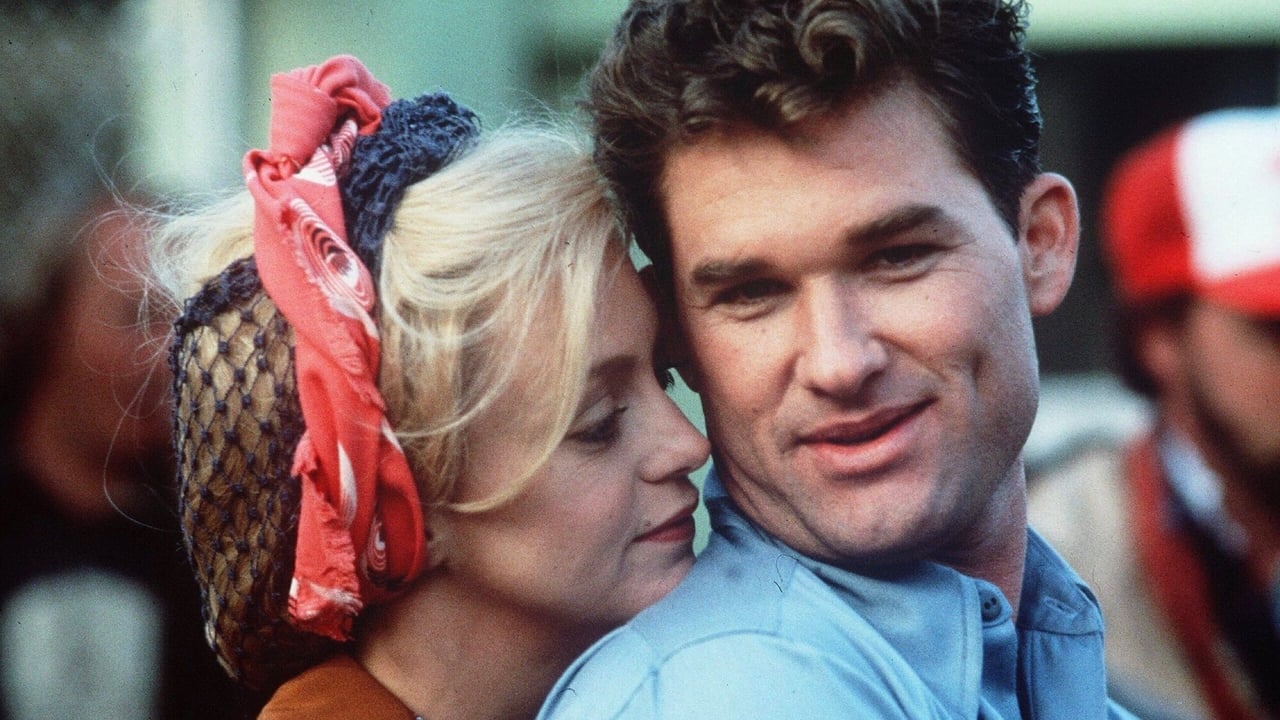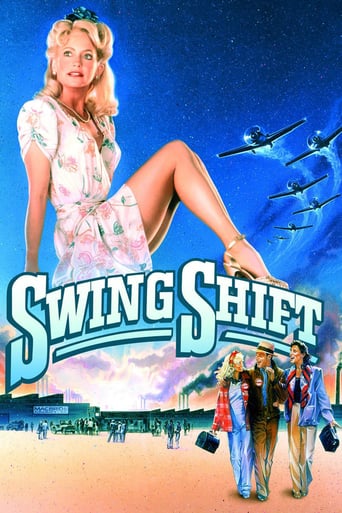

I think this is a new genre that they're all sort of working their way through it and haven't got all the kinks worked out yet but it's a genre that works for me.
... View MoreWow! Such a good movie.
... View MoreThat was an excellent one.
... View MorePeople are voting emotionally.
... View MoreGoldie Hawn plays Kay Walsh and Ed Harris plays her husband, Jack, who enters the service in the aftermath of the attack on Pearl Harbor. Left alone, she--like many women who responded to the need for stateside "manpower"--takes a job at a factory and learns of the joys of hard, meaningful work.A coworker named Lucky (Kurt Russell) tries to get Kay to go out with him. After many months, she succumbs to his attentions and they embark on an affair.The film focuses on Kay and Lucky, but it is really about the social upheaval that occurred during WWII. By necessity, great strides were made in blurring the lines between the standard gender roles. After the war, there was some regression to prior roles, but the genie was already out of the bottle. It was the beginning of lasting changes.Likewise, some rules of (moral) behavior were blurred or bent. In the film, the affair of Kay and Lucky is portrayed as a happy thing, though Kay surely feels guilt. But we also see that the friends and coworkers who surround them also accept their relationship--not necessarily on a permanent basis, but at least for the duration of the war, which to some extent has suspended the conventions of society. When Jack comes home on 48 hour leave, she says, "I'm not the same. And neither are you."The film is not very subtle, but it really captures the era of the forties. The acting is solid but, as others have noted, Christine Lahti as the neighbor and coworker, Hazel, really stands out. For a more compelling film of this era, see "The Way We Were".
... View MoreIn this WW2-era drama, Goldie Hawn is the main character, and she tries to keep pace with the changes in her life as she goes from demure housewife from Iowa to lead lineperson in an aircraft factory by day and some-time escort of a jazz trumpeter (with a motorcycle/sidecar, no-less) by night. An interesting unfolding of the individual takes place amongst the trials of war-time life. When she finally, after many months, succumbs to the jazzman's charms, I was sympathetic toward her loneliness and formerly-repressed need for expression. During her tryst, it was always evident that she still loved her husband, played by Ed Harris, who was away in the navy. The fine acting jobs by Hawn, Harris, Russel and Christine Lahti are not exactly wasted in Swing Shift, but I would have liked to have seen more of the inner persons exposed, especially in regards to their thoughts and questions about why the Japanese attacked. The movie is good, but the individuals portrayed in the movie accept the war and their roles in it somewhat robotically, in that there is very little dialogue regarding the U.S. military's presence in Hawaii and other foreign countries. I feel this kind of dialogue would have helped develop the characters more. A fine move, well-directed and well-produced. Some powerful acting by Hawn, who manages to seem scared, but dauntless at the same time. Not an easy thing to do.
... View MoreI was not expecting much more than typical Hollywood schlock from this one, but director Jonathan Demme delivers much more than that. Produced in 1984, SWING SHIFT tells the story of a young woman (Goldie Hawn), who begins working in an airplane factory soon after her husband (Ed Harris) joins the U.S. Navy in December of 1941. She is tempted to indulge in an illicit affair with her foreman at the factory (Kurt Russell), while knowing full well that this would be wrong and inexcusable behavior. I won't reveal the plot for you, in case you have a chance to see this interesting film, but the acting is believable, the dialogue sounds natural, and the period detail is convincing. These characters seem like real people. I enjoyed it very much and found funny girl Goldie Hawn to be a talented and likable dramatic actress. So, too, is Christine Lahti, who plays the role of her best friend. The whole film is nostalgic, evoking the Los Angeles of WWII very well indeed, and the editing keeps the story line moving. The critiques for SWING SHIFT were decidedly mixed, but I can recommend it with enthusiasm. Worth seeing.
... View MoreThere is a goof that would only be noticed by someone about as old as I am . There is a scene where a car pulls up to a stop sign. In fact the camera puts a rather big part of the stop sign in a brief scene. Now, currently we all know that stop signs have a standard coloring of white lettering on a red background. But in the 1940s, during World War II and perhaps into the 1950s stop signs had black lettering on a yellow background. This is probably not realized by many people born in and after the 1950s because so much of the photography back in those days was in black and white. So, you don't often see a an old magazine photo of a street scene in color so even if a stop sign was in the hypothetical magazine photo it would have to be in color to be noticed. So, the movie showed the stop sign as white on red but to be accurate for the time period it should have been black on yellow. I remember being perhaps 8-10 years old (born in 1942) when the standard stop sign color scheme was changed to present white on red. This was reported to be easier to see by drivers so traffic safety was increased. So, I want to register this blooper by the makers of the film. Moe in Iowa
... View More